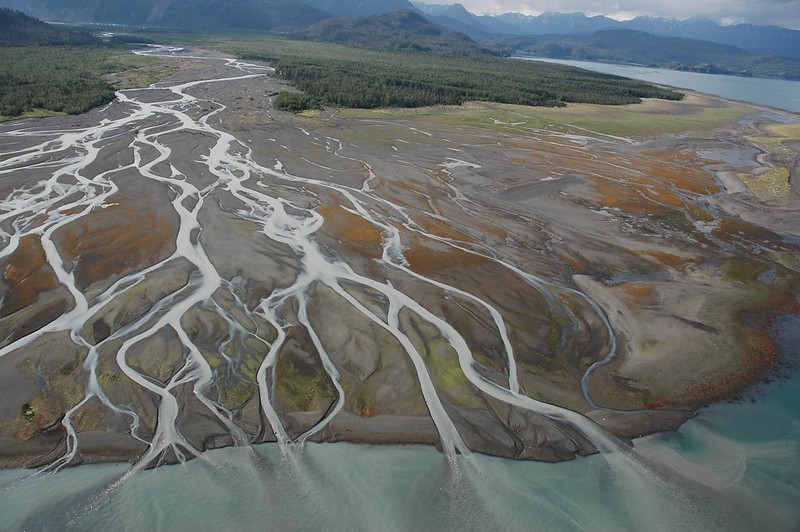Roadmap for Answer Writing Introduction Introduce the Topic: Briefly explain what ocean currents and waves are. Mention their importance in marine ecosystems and coastal communities. Thesis Statement: State that ocean currents and waves significantly influence marine ecosystems by affecting biodiversity, migration, and climate, and have various ...
An ocean current is a continuous, directed movement of seawater in the ocean, driven by various forces such as wind, temperature, salinity, and the Earth's rotation. Examples of ocean currents include the Peruvian current, Labrador current, and Falkland current. These currents play a crucial role inRead more
An ocean current is a continuous, directed movement of seawater in the ocean, driven by various forces such as wind, temperature, salinity, and the Earth’s rotation. Examples of ocean currents include the Peruvian current, Labrador current, and Falkland current. These currents play a crucial role in concentrating and dispersing various marine resources—valuable materials and assets derived from the world’s oceans and seas—leading to the differential distribution of marine resources worldwide.
Influence of Ocean Currents on the Worldwide Distribution of Marine Resources:
- Fisheries: Ocean currents play a pivotal role in the distribution of essential nutrients, plankton, and fish larvae, impacting the global presence of fish populations. For example, the convergence of the Labrador and Gulf Stream currents has created one of the richest fishing grounds in the North Atlantic Ocean.
- Mineral Resources: Ocean currents are instrumental in dispersing or concentrating mineral deposits on the seafloor, shaping mineral resource availability. An example is the Clarion Clipperton Zone in the Pacific Ocean, known for vast polymetallic nodule formations.
- Marine Biodiversity: Ocean currents serve as dynamic conveyor belts that bring together diverse marine species from different regions, creating biodiversity hotspots. They also facilitate the dispersion of marine organisms, influencing the composition of ecosystems.
- Notably, the Gulf Stream in the North Atlantic creates prime conditions for phytoplankton and zooplankton growth, influencing the distribution of species like Atlantic mackerel and bluefin tuna.
- Coral Reefs: Ocean currents play a pivotal role in shaping the geographic boundaries of reef formation by delivering vital nutrients and maintaining the interconnectedness of reef populations through the dispersal of coral larvae and other marine organisms. An illustrative example is the East Australian Current, which has significantly contributed to the extensive formation of the Great Barrier Reef in the Pacific Ocean off northeastern Australia.
- Marine Biotechnology: Ocean currents can carry valuable microorganisms and genetic material used in marine biotechnology, such as pharmaceuticals, cosmetics, and bioplastics. For instance, the Kuroshio Current in the Western Pacific transports diverse genetic material, making it an area of interest for biotechnological research.
- Oil and Gas: Ocean currents influence the movement and dispersion of oil and gas deposits beneath the seabed. They can create eddies and gyres that affect the accumulation and distribution of hydrocarbons. For instance, the Gulf Stream in the North Atlantic has played a significant role in the distribution of oil reserves along the coast of the United States.
- Renewable Energy Resources: Ocean currents are pivotal in determining the availability and strength of renewable energy sources like tidal and ocean current energy. Areas with robust and consistent currents, such as the Pentland Firth in Scotland or the Gulf of Maine in the United States, are ideal for deploying renewable energy technologies like underwater turbines.
Ocean currents, driven by various natural forces, shape the distribution of valuable marine assets in several ways. Recognizing their profound influence is essential for preserving and responsibly managing these invaluable marine resources on a global scale, ensuring both ecological balance and sustainable utilization as we explore and harness the riches of our oceans.
See less



Model Answer Impact of Ocean Currents and Waves on Marine Ecosystems Ocean currents and waves significantly influence marine ecosystems in multiple ways, including nutrient distribution, migration patterns, and climate regulation: Larvae Dispersal: Ocean currents act as highways for marine organismsRead more
Model Answer
Impact of Ocean Currents and Waves on Marine Ecosystems
Ocean currents and waves significantly influence marine ecosystems in multiple ways, including nutrient distribution, migration patterns, and climate regulation:
Impact on Coastal Communities
Ocean currents and waves also have direct implications for coastal communities, influencing climate, economy, and even disaster risks:
In conclusion, ocean currents and waves play a vital role in both marine ecosystems and coastal economies, influencing everything from biodiversity to climate and shipping industries. Understanding these factors is crucial for sustainable coastal management and disaster preparedness.
See less